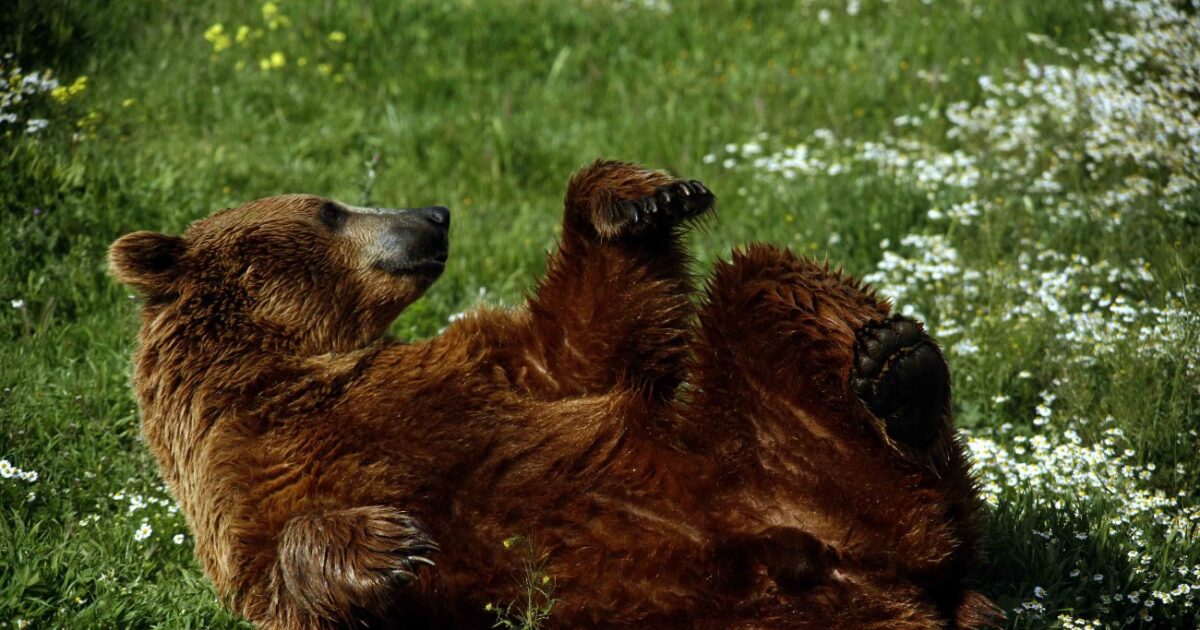An exciting trip to her habitat bearThrough virtual tour, the “The Bear Project” application offers to small and large “visitors”.
Users of the application will be able to discover the way the brown bear interacts with the ecosystem, while providing multimedia and educational content with information on nutrition, habits, reproduction and threats facing Europe’s largest land mammal.
The application was developed by students from Florina, winning third in the 8th Panhellenic Generation Next competition.
The Lifor team from the small hacker group of the Florina Experimental School of the Experimental Elementary School, Orpheus Alexiadis and Pavlos Lougas (3rd Gymnasium) and Anastasios Eliades (Secondary Gymnasium) facing its populations and pushing active action to protect it.
“The team’s main motivation was to make the learning experience about the bear’s habitat more fun. Having been guided many times to the “Arcturos” facilities in Nymphaeum, Florina, they set the goal of creating a working prototype for a virtual tour experience for pupils and students who are unable to visit the Coffee Bear Protection Center and its natural habitat in our area.
The children, as he explained, were based on HTML Framework Aframe.io (https://aframe.io), which allows for the creation of virtual and augmented environments (VR and AR) using HTML and JavaScript and which are open source and also used the Appinventor to implement the application.
Referring to the most difficult technical problem they faced, he noted that it was the integration of specific 3D models into the environment due to incompatibility of the publications. The JavaScript code, which adds the interaction elements to the VR environment, also proved to be quite demanding, Mr. Arvanitakis underlined.
Lifor team worked closely with non -governmental and non -profit, Environmental Organization “Arcturos” And in particular with the implementation of the organization’s educational programs, Maria Glouftsi, Mr. Arvanitakis stressed. “We met both online and closely in our area and had the opportunity to discuss all the information we use in the application and how we can improve them,” he said.
3D exploration of the bear’s natural environment
“The ‘The Bear Project’ app helps users better understand the life and habitat of the brown bear through a double experience: with an interactive virtual reality environment (VR) and with a handy application to the mobile or tablet that provides rich information and multimedia material,” said Orpheus.
Distinguishing the most interesting features of the application, stressed that they are:
- VR environment simulation: Through WebVR technology, the user can explore the bear’s natural environment and realize how the bear interacts with the ecosystem elements.
- Multimedia and educational content: The application contains rich material with images, videos, and detailed information on nutrition, habits, reproduction, and the threats facing the brown bear.
- Accessibility for everyone: Integrate features such as text-to-speech, enabling users with reading difficulties or vision problems to have equal access to educational content.
Cooperation bridges between schools, local communities and environmental protection bodies
Particularly positive, Paul Lougas, who conveyed the impressions of the children who tried it, described the application of users to the application, stressing that they said that they were impressed by the VR environment reminiscent of a game and also appreciated the opportunity to have easy access to information with multimedia and multimedia.
The Lifor initiative, Paul Lougas told RES-EIA, is particularly important for raising awareness of protecting environmental and wildlife as it offers experiential learning, which enhances understanding and empathy, causes the interest and curiosity of users, enhancing their information, enhancing themselves, mobilizing users towards active action and protection of nature.
He also stressed that through initiatives, such as his team, bridges are created between schools, local communities and environmental protection bodies, such as Arcturos, thereby enhancing the collective effort.
Harmonious living with wildlife
As a reality with many challenges, but also opportunities, Anastasios Eliades described the coexistence of man with the brown bear in Florina. “This is an area where the brown bear has been a natural resident for thousands of years and people are called upon to live in harmony with her daily. Although significant steps have been taken thanks to efforts by bodies such as “Arcturos”, there are still issues such as the protection of agricultural crops and the safe management of human activities near the forests and habitats of the bear, “he said.
The “The Bear Project” application, stressed by Anastasios Eliades, can essentially help improve this relationship with the following ways:
- It offers users clear information about the habits and behavior of the bear, which reduces fears and stereotypes around the species.
- Through virtual reality and multimedia experience, users better understand the value of the bear in the local ecosystem and how important its protection is.
- The knowledge provided by the application leads residents to more responsible practices in terms of security and harmonious coexistence with wildlife.
In the 8th Panhellenic Generation Competition Next, high school and high school students who participated, presented their proposals not only as active citizens of Greece, but also as members of a large European community, highlighting the dynamics of STEM in the development of innovative solutions.
Generation Next is a Vodafone Foundation’s Digital Skills Development Program that offers free access to STEM Education and new technologies to pupils and teachers wherever they are in Greece. To date the program, focusing on the digital platform www.generationnext.vodafone.grmeasures more than 135,600 beneficiaries and 962 innovative students/pupils. The program is implemented in collaboration with the SCICO nonprofit educational organization – Science Communication and the academic contribution of the Greek -German education.
